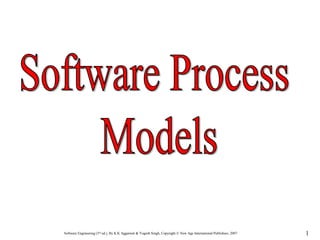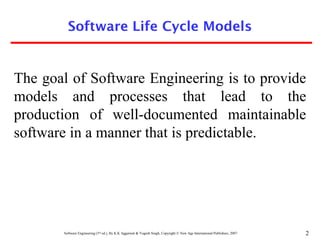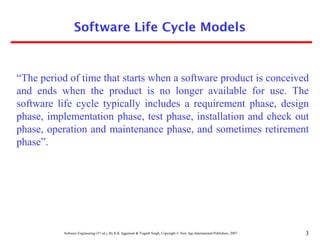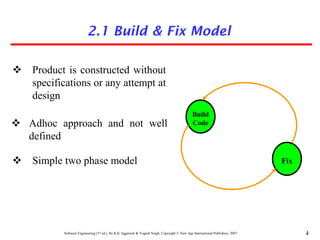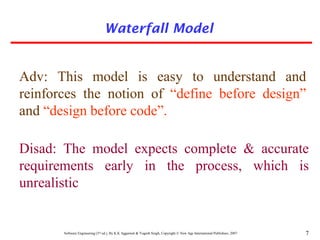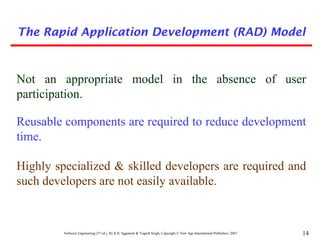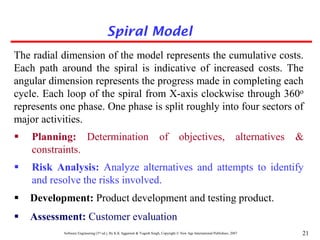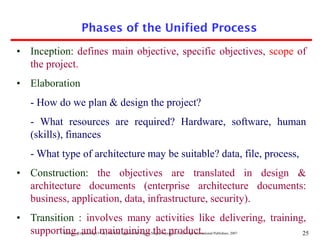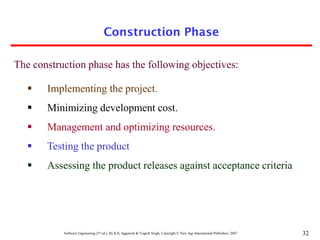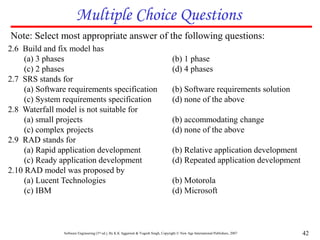The document discusses various software engineering models, including the build & fix model, waterfall model, incremental process models, and the spiral model, detailing their advantages and disadvantages. It emphasizes the importance of proper requirement definitions, user participation, and risk management in selecting an appropriate software life cycle model. The unified process is outlined as a structured method for producing maintainable software within specific time and budget constraints.
